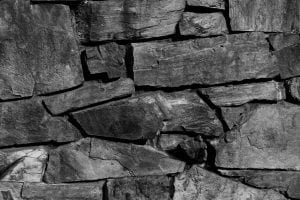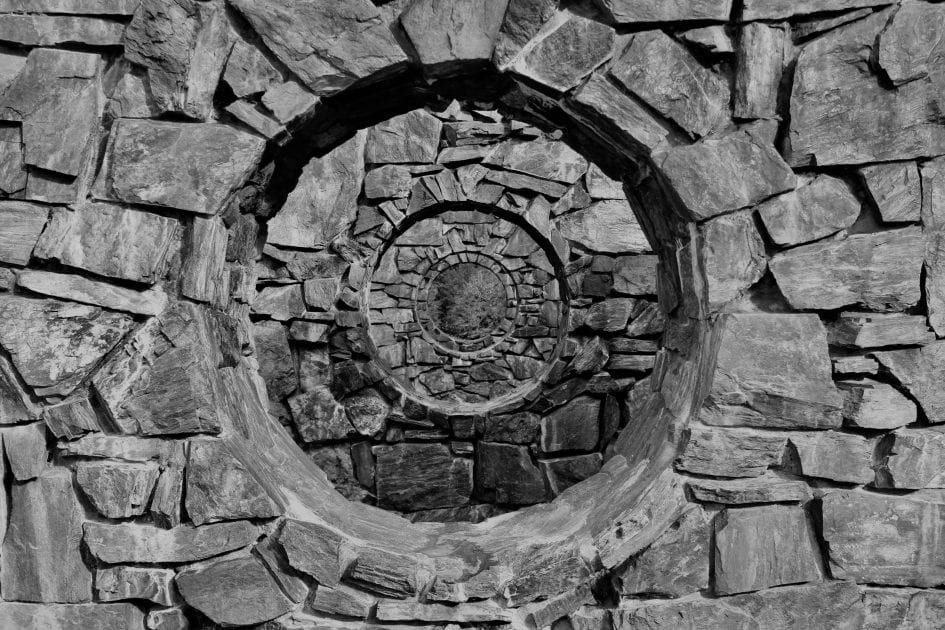About the Sculpture: 
Nancy Holt created an outdoor land art piece on Western’s campus, which is called “Rock Rings” and was created from 1977-1978. The piece was originally created to be away and hidden from the buildings on campus, but in years since the art piece was created Western has added on many buildings, which now stand only a few feet from the land art piece. The piece today still remains hidden and has the same meaning that it used to, but the piece is not secluded like Holt had originally hoped it would remain. “Rock Rings” aligns with the North Star, which is said to be linked to the fact that Western in the most Northern college in Washington. It is also rumored that the rings were created by Holt to look similar to a compass and related to how people on ships would use the North Star for navigation in the past. 
In February of 1977 the Soviet Union launched the Soyuz 24 space mission, which ended up being successful. This could relate to Holt’s sculpture because both the sculpture and the space mission relate to astronomy and space. The Trans Alaskan Oil Pipeline was opened in 1977 and this was the first year that oil was officially moving through the pipeline. The pipeline could relate to Holt’s “Rock Rings” sculpture because she was an environmental activist and later in her life tried to stop the oil drilling and pipelines in other places in the United States. The US also gave the Panama Canal back to Panama in 1977, which Holt could have taken inspiration from because when people would travel along the Panama Canal the stars were above them and the Panama Canal is a part of the environment just like Holt’s sculpture. In 1978 the first women astronauts were chosen and announced in the United States. The women astronauts relate to space and Holt because she was one of the only women in her field and her sculpture directly connected to outer space.
About the Artist: 
Nancy Holt was born in Worcester, Massachusetts on April 5, 1938 and passed away on February 8, 2014 in New York, New York. She was always interested in science and art, which later translated into many of her pieces that were integrated into the environment. In 2007 Holt began focusing on environmental activism due to her interest in the environment. Land artists were mostly men during her lifetime and while she was creating land art pieces, so Holt left a legacy showing women that they can achieve just as much as men can.
 Nancy Holt is most known for “Sun Tunnels”, which is another art piece that she created in 1976 and is located in Utah. She collaborated with engineers, pipe manufacturers, astronomers, and many other various professionals. “Sun Tunnels” is considered her most ambitious and most recognizable piece of artwork she created. This piece of art consists of four concrete tunnels that align with the sunrise and sunset during the summer and winter solstices. The four concrete cylinders have small holes that represent the Draco, Perseus, Columba, and Capricorn constellations.
Nancy Holt is most known for “Sun Tunnels”, which is another art piece that she created in 1976 and is located in Utah. She collaborated with engineers, pipe manufacturers, astronomers, and many other various professionals. “Sun Tunnels” is considered her most ambitious and most recognizable piece of artwork she created. This piece of art consists of four concrete tunnels that align with the sunrise and sunset during the summer and winter solstices. The four concrete cylinders have small holes that represent the Draco, Perseus, Columba, and Capricorn constellations.
Holt was one of the first artists to incorporate astronomy and elements of time and location into her land art pieces. She tried to incorporate the pieces into the environment as much as possible due to her love of the environment. Her art was completely different than other artists in her field because it was created by a woman and the pieces put together concepts that had never been combined prior to her creating them. It was such a huge accomplishment that Holt created land art and was a women because prior to Holt people thought that women were not capable of creating large land sculptures like male land artists that were known. Although Holt was most popularly known for her outdoor land art installations, she also created poetry, paintings, and indoor installations.
References:
Inscoe, Michael. “The Importance of Nancy Holt, the Woman Who Revolutionized Land Art.” Atlas Obscura, Atlas Obscura, 27 Sept. 2017, www.atlasobscura.com/articles/nancy-holt-bio-land-art.
Milicic, Vladimir and Schlotterback, Thomas. Symposium on Western’s Outdoor Sculptures. Bellingham, Western Washington University, 1979.
“Nancy Holt Most Important Art | TheArtStory.” The Art Story, www.theartstor y.org/artist-holt-nancy-artworks.htm#pnt_5.
“Research, React, and Execute.” Stone Enclosure: Rock Rings Holt, 17 Nov. 2016, https://wp.wwu.edu/wwuart109/category/southcampus1/holt/.
Contributors:
Lauren Baker: Research and action plan
Tori Addicks: Photographs, organization of blog, and editing








November 30, 2024 at 11:40 pm
I used to be suggested this blog by my cousin. I
am now not positive whether or not this submit is written through him as no one else recognise such targeted
about my trouble. You are incredible! Thanks!
Also visit my blog post; vandavasi.in